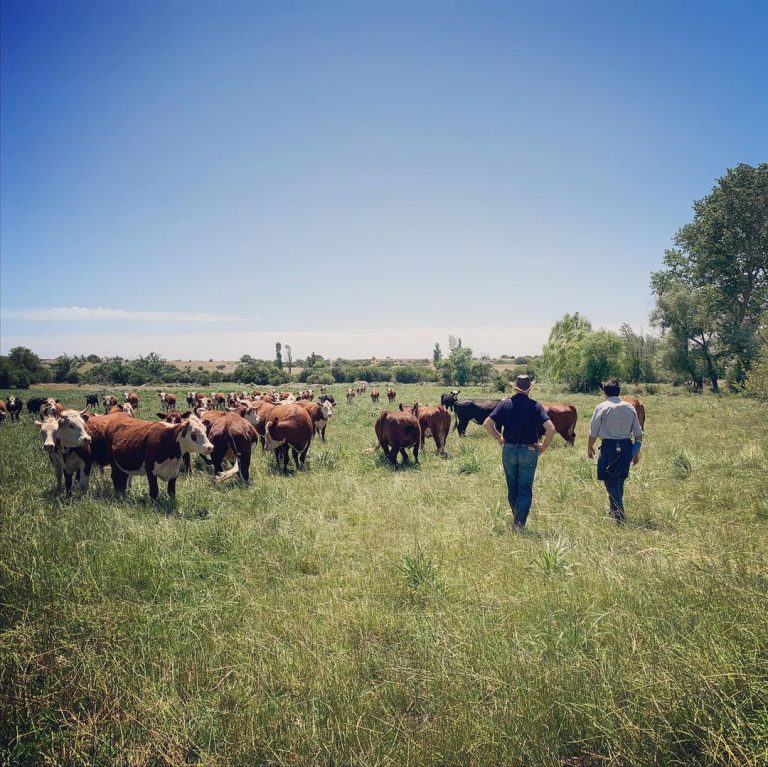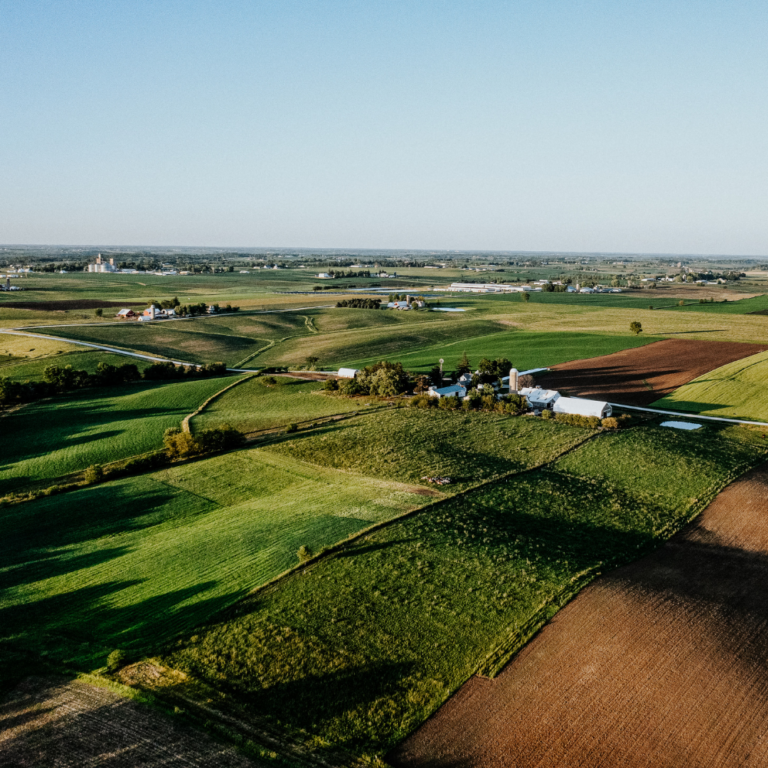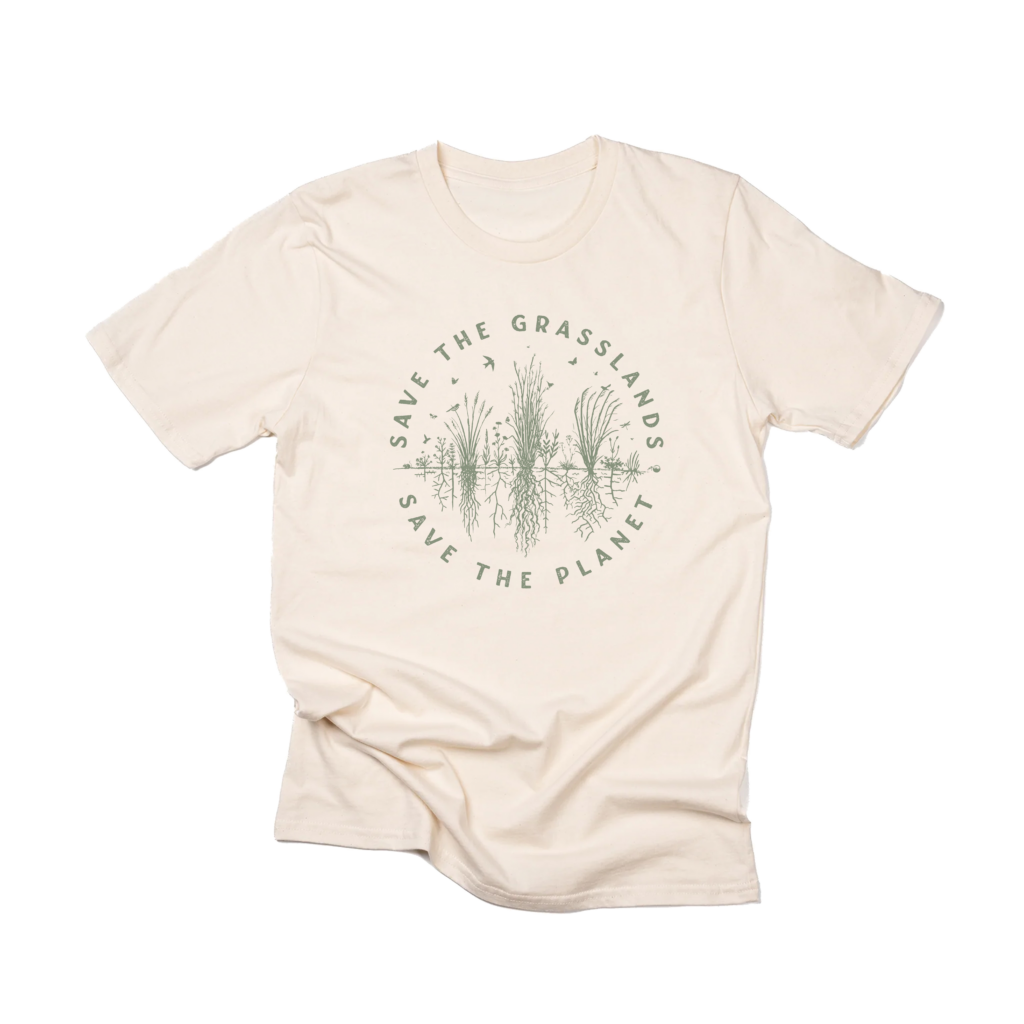The Missing Tool: Without Which Climate Change cannot be addressed.
Now to my sixth in this series of posts breaking the greatest challenge I believe society faces – managing what is complex – into small digestible segments. Anyone new to this discussion would benefit from following earlier posts for it to make sense. To do so http://savory.global/newsroom Scroll down to Allan Savory Uncensored where previous posts are in order. Last post was http://bit.ly/1ROtjDh
Tool-using animal.
Earlier I discussed the fact that we are tool-using animals that cannot manage what is complex and lack any tool that can address global desertification and its role in climate change. That while we believe we have thousands of tools we really only have four. 1). Technology in all its forms, 2). Fire, 3). Resting the environment, 4). living organisms (trees and other plants, microbes, etc.) – these are the tools we have to manage our environment.
Properly managed livestock – the missing tool.
The missing tool is livestock providing animal impact and grazing, without which we are not able to seriously and successfully tackle desertification and climate change. In my 2013 TED talk on desertification http://on.ted.com/Savory I said that we had only one option – to do the unthinkable – and use livestock. Some people took me to task pointing out that there are always many options. Since then I have stressed ONLY even more. I do so for two reasons. (1) Because the situation is more serious than all wars ever fought and (2) No scientist has shown where either my logic or science is flawed, while many have ridiculed the idea.
Vilification of livestock.
We have for centuries vilified livestock for causing desertification and more recently also climate change. Today literally hundreds of celebrities have joined the growing vegetarian and vegan movement to save the environment, and eminent scientists given media coverage stress the need for the world to eat less, especially red, meat.
Such antagonism against livestock, as well as against ranchers, and pastoralists resulting in cultural genocide in the U.S., Israel, China and elsewhere I once shared because I loved wildlife and could see the obvious damage where pastoralists and ranchers ran livestock.
No one is to blame for misinterpreting what we all could see so plainly through the lens of our beliefs. Observing the loss of biodiversity and beginning of desertification in wonderful wild areas in Africa, where we were forming new National Parks, led to my questioning the dogma of my university training and my beliefs as a scientist. Despite the abundance of peer-reviewed papers and international reports, there is no science underlying the belief that livestock, and not our management of them, cause either desertification or climate change. So let’s discuss this but before doing so look at this picture of extremely severe desertification as bad as any in the world.
This is land that has had no livestock on it for almost a century. It is managed by the U.S. National Park Service a wonderful organization staffed by highly trained competent people and with all of the knowhow of the United States. Hundreds of thousands of dollars have been spent on soil conservation measures to no avail. When asked to explain, a common response is that livestock caused it to deteriorate so badly it cannot recover. Another belief I once held and even published a paper “proving” that an area of land in Rhodesia – where thousands of cattle died as well as 50,000 head of game – and it got worse not better was because it was beyond recovery. I was wrong as we all are so let’s look at the reason.
Annual distribution of humidity
All terrestrial environments fall on a continuum along a scale of distribution of humidity regardless of how high or low the rainfall. Some environments enjoy humidity throughout every year even with low rainfall. Others experience periods of humidity and dryness even with high rainfall. The total rainfall in London and Johannesburg are similar but they are very different environments. While we had as scientists always recognized arid and semi-arid environments saying that the latter were those where desertification was happening, this did not explain the desertification I was seeing in high, but seasonal, rainfall. To describe the new concept I coined the name brittleness scale. All environments falling along a simple 1 to 10 scale from non-brittle to very brittle. I used the term brittle because crumple dead leaves and stems of plants in your hand at the low end and they simply crumple, while toward the high end they shatter into fragments, they are so brittle.
Importance of the cycle of life cycle to sustain life.
For all life to flourish it is essential that life, including annually dying plant material, keeps cycling. Plants, animals, humans, need to keep being born, growing, dying and decaying. Break this cycle at any point and life runs down. While we knew this as scientists we never thought to look at how this life cycle functions in environments across the brittleness scale. We simply knew that if new life was not appearing life would run down. We knew no life form can avoid death. We never dreamt that this cycle could break down in the decay part of the cycle with annually dying grass leaves and stems over most of the world’s land lying higher on the brittleness scale, nor that this would cause a breakdown in their establishment of new plants and a chain of problems culminating in desertification and climate change.
Soil life, plants and animals evolved together as one whole of great complexity.
In each type of environment, along the continuum from permanently humid to seasonally humid to almost permanently dry, the soils, plants and animals evolved together as whole biological communities. Although grasses, forbs, shrubs and trees grow right across the scale it is in the animal life that greater differences evolved. At the low more humid end of the brittleness scale there were few large grazing animals and most herbivores are and were insects. As we move higher across the scale large grazing animals became a greater bulk of the herbivores eating vegetation. At the low humid end most large predators, like jaguars or tigers, hunted singly by stealth because they had few prey. Moving higher on the scale most predators were pack-hunting predators because of the great numbers of prey.
With this evolution of all life forms, and lacking high numbers of herding grazers and pack-hunting predators, a lack of frequent disturbance over centuries characterized the more humid nonbrittle environments such as we see in this picture.
On the other hand, with billions of large grazing animals in the past in the more brittle environments periodic or routine high physical disturbance by animals was the norm for millions of years until modern mankind. And these environments are essentially the world’s grasslands in that grass plants play a major role in supporting all life and covering soil as we see in this picture.
While we pour funds and attention on our important tropical and other forests and their biodiversity I think it true to say we largely ignore our far more vast grasslands be they open grassland, dry deciduous forest or savanna.
It is former grasslands with their once deep carbon rich soils that are the great grain growing regions. And Jan Smuts (who gave us the theory of holism) had this to say; “In general I may say that people do not realize the importance of grasses for human life. We literally live on grasses. All the important cereals, which sustain human life, such as wheat, rice, maize, [sorghum], are grasses… Meat also, through animals, is a product of grasses. Directly and indirectly, therefore, all life is grass, and not merely like grass, as the poets say. And when we consider how small this globe is, and how rapidly the human race is expanding and over-occupying it, we begin to realize to what an extent the whole future of the human race on this globe is dependent on the progress we make in the development of our grass resources..”
Because the brittle environments that are essentially grasslands are so vital for our future and so vast it is important to grasp the scale and is perhaps best seen in the brown or pale green in this NASA view of the world.

What sort of numbers of large grazing animals were present in the past?
We cannot conceive of the past numbers that early humans as a scavenger- turned-predator wiped out. Pack-hunting predators isolate an animal from a herd to kill, and then many predators eat one animal. They are carnivores dependent on their prey and so generally remain in balance with their source of food. Humans are neither carnivores nor natural predators. We are omnivores that learned to kill large animals with language enabling us to organize using spears and fire. While we could not easily isolate animals, we could organize and drive whole herds over cliffs, into stone walled traps, rivers, bogs or surround them with fire, killing thousands at a time while eating few. Being omnivores, as we killed out our prey we simply turned to other animals and foods and kept increasing in numbers. To this day sites of mass killing are found with few animals eaten, and kilometers-long stone walls forming a V leading to killing grounds in former grasslands now desert.
Astounding historical records of numbers were remnants.
In a recent Schumacher Lecture https://www.youtube.com/watch?v=IrBauQO2sI4 I quoted some early records of animal numbers beyond belief – herds covering miles, uncountable and giving the impression the land and not the animals were moving. Those were records of bison in North America and various antelope in South Africa about a century before I was born and they were almost certainly the pathetic remnants of former species and numbers. There are apparently about 11 species of large mammals in N. America today where there used to be about 40 more species.
While more species survived in Africa because of its sheer size and human diseases, many grazing animals or their predators disappeared entirely from areas far larger than the U.S. Nowhere are there intact communities and I was indeed fortunate as a young biologist to work with some of the remnants where I gained my first clues about the health of the land being associated with high animal numbers and predators.
What causes desertification in brittle environment grasslands?
For centuries we have blamed too many animals – livestock overgrazing grasses. This is a deep societal belief that assumed scientific validity based on observation and belief but not science.
Man-made desertification begins when the available rainfall becomes less effective. Most of the rain (or snowmelt) runs off the soil surface, or is absorbed by the soil but then evaporates out of the soil surface – resulting in both floods and droughts. Effective rainfall was a term I had to develop in the 1960’s when I first realized this after observing how often droughts and floods coincided in Africa.
In the vast brittle environment grasslands of the world rainfall becoming less effective begins with increased soil exposure between grass plants. After sixty years of investigation on six continents, and a great amount of literature research, I have found only two things lead to millions of hectares of grassland with a high percentage of bare soil between plants. Too few animals providing inadequate periodic disturbance while overgrazing plants and / or fire. Both being standard practices for centuries the greatest mystery would have been had global desertification not been spreading.
Too few large grazing animals without herding and bunching behaviour do not provide enough physical disturbance to ensure rapid biological decay of annually dying leaves and stems of perennial grass plants, nor adequate trampling of plant material to provide soil cover. In sunlight this dead material breaks down by gradual chemical oxidation rather than rapid biological decay, thus breaking the decay part of the annual cycle of dying leaves and stems. Plants weaken and die prematurely leading to bare soil between widening plants, a shift to woody plant encroachment and hard soil capping shedding water and to desertification. For centuries humans used fire to burn the old oxidizing grass and environmental organizations and scientists still support such fire use to try to maintain healthy grasslands. Over a billion hectares of grassland is burnt every year in Africa alone contributing greatly to droughts, floods, poverty, violence desertification and climate change.
What livestock can do that other tools cannot.
• With high enough numbers and herding behaviour livestock maintain biological decay in the annual cycle of dying plant material in brittle environment grasslands.
• With high animal impact – trampling, dunging and urinating – livestock trample dead plant litter to the ground providing soil cover between plants and breaking hard-capped soil surfaces. This together with dung and urine, as any gardener knows, improves water penetration, retention and the ability of new plants to establish and grow.
• Overgrazing of plants meanwhile is minimized by constant movement and animals not lingering for long periods grazing plants because, as science teaches us, overgrazing has nothing to do with high animal numbers. Overgrazing occurs when plants are exposed to animals for too many days, or re-exposed to grazing after inadequate time to recover from grazing. A function of time not numbers.
What can be done to deal with desertification and climate change using the present four tools of mankind – technology, rest, fire and living organisms?
Technology.
Society, and thus our institutions, believe in technology coming to our rescue. Technological solutions to deal with desertification attract enormous funding. Thus the U.S. and other nations have spent many millions of dollars on various large machines to mimic animals to no avail, to plant grasses, shrubs and trees to no avail, and past civilizations perfected water harvesting with swales and other techniques to no avail.
Where only technology can assist, and is doing so, is in developing alternatives to fossil fuels, also vilified for causing climate change. Something Al Gore has championed so successfully. This he repeated in a recent TED talk in which he described the encouraging rate of conversion to environmentally benign sources of energy, stating with assurance that we will win! While developing benign forms of energy is essential and laudable we do need to keep perspective and the greater complexity in mind.
Developing alternative energy to stop adding carbon and other gases to our atmosphere is but one piece of the problem. Climate change will continue – because of all the carbon and other gases coming from agriculture, soil destruction, biomass burning (annually billions of hectares of grassland and periodically millions of hectares of forests), and of course desertification.
In my second blog post in this series I pointed out that managing what is complex is the single greatest challenge we face. And there I pointed out that everything we “make” involves technology and by definition does not involve self-organizing complex systems. Developing alternative energy sources is an example – once more we are making something using technology – electricity from sunlight and wind in this case – and not dealing with managing complex systems. Please do not misread me. This is vital. Before we can dream of winning we have still to tackle the bulk of the global desertification and climate change problem that involves managing what is complex. Nature’s complexity and that of our organizations and institutions through which we are addressing these problems. Human organizations are defined as complex soft systems, and as such have what are called wicked problems – one of which is that they reflect the beliefs of society and cannot change ahead of a significant shift in public awareness and opinion.
Fire – is simply rapid oxidation not biological decay, and fire destroys dead plant litter further exposing soil, while polluting the atmosphere, as do fossil fuels.
Resting the land (we rest land to conserve it and thus generally call this conservation). From what I have discussed about brittle environments and the essential role of vast numbers of large grazing animals, I hope all can now understand why the first picture in this post of land without livestock for nearly a century that is totally rested is becoming desert.
These pictures below I took close to my New Mexico home on the Rio Grande river in the Aldo Leopold memorial forest, showing the oxidizing dying grasses, bare soil, and biodiversity loss in this riparian brittle environment so carefully conserved.
While conserving charismatic cottonwood trees along the river, most of the land is losing biodiversity dependent on covered living soil with long-dead oxidizing grasses and consequent bare soil.
Partial and total rest.
Along with the scientific insights, that made the development of the holistic framework for managing what is complex possible, were not only the recognition of the brittleness scale, the role of large grazing animals and predators, the adverse effects of resting such environments but also the concept of partial rest.
Partial rest is what occurs when grazing animals are on the land but in low numbers and/or scattered most of the time. The effects of partial rest in all environments across the brittleness scale is almost identical to that of total rest. In other words, partial or total rest low on the scale in more humid environments leads to recovery with no damage done. As the land is positioned across the brittleness scale the effect is increasingly damaging, leading to desertification. The picture below illustrates this vital point.
This land on the boundary of the U.S. land managed by the National Park Service shown earlier – with both low rainfall and high on the brittleness scale shows extreme loss of biodiversity and desertification on both sides of a fence. On the one side of the fence range scientists maintain the area is overstocked and overgrazed by Navajo sheep, and the land is obviously in bad condition. The other side is managed as a sanctuary with all livestock removed about a century ago, and hundreds of thousands of dollars have been spent on soil conservation measures. After so many years of entirely opposite treatments I leave it to you to decide which side is which?
The reason both sides are indistinguishable is because on the one total rest was the dominant influence and on the other partial rest the dominant influence – and the results are almost identical. And this we find confirmed by countless U.S. government research plots scattered all over the Western U.S.
Not only in the U.S. do we see such failure of conservation to restore biodiversity in brittle environments, but also in Africa’s National Parks as we see in this park near where I live much of the year.
Despite all the evidence, as mentioned, there are no published papers. In the Position Paper on Climate Change published by the International Range Science Society the deterioration on totally rested research plots was attributed to “unknown processes” which is understandably because we had never understood the underlying cause of desertification. No one is in any way to blame. I only lay out what is happening and has for centuries: we humans, even when highly trained as scientists, remain human and we easily see what we believe, but we simply do not see the most blatant evidence at times if it is counter to our deep beliefs.
Living organisms is our remaining fourth tool.
Just as we cannot even drink water, unless at the nearest river with our hands and mouth, unless we use technology (cup, mug, tap, plastic bottle) we cannot use plants as tools without technology.
Using technology to plant grasses, shrubs and trees to stop desertification does not address oxidation or biological decay. While claimed by some as successful examples of reversing desertification, on investigation this is invariably found to be in the less brittle more humid environments where desertification is not occurring. Or when in seasonally humid brittle environments where they receive about 600 mm (24inches) or more of rain per year while vast desertifying lands get far less than 600mm of rain. And such practice ignores the fact that such plants after millennia of no technology now require it to establish. Many civilizations appear to have tried but failed.
What else are we left with? What other options do we have? Unless some scientist or other person can come up with some other tool available to humans that can annually over billions of hectares (much under 300 mm of rainfall) maintain biological decay, break soil surfaces and cover soil with litter we will not be able to seriously deal with either desertification or climate change. I hope all who have read thus far will understand with so much at stake for all of humanity we need to find solutions now.
In my next blog post I will discuss what managing livestock properly means and how easy it is to do – because, remember, how we manage livestock today in industrial factory settings contributes enormously to health, economic and environmental problems (should ideally be illegal) and how we have managed them for centuries, and most ranchers and pastoralists still do, on the land is leading to desertification and thus climate change. And in subsequent posts I will discuss why it is that livestock are going to prove every bit as important as technology if future generations are to thrive.





